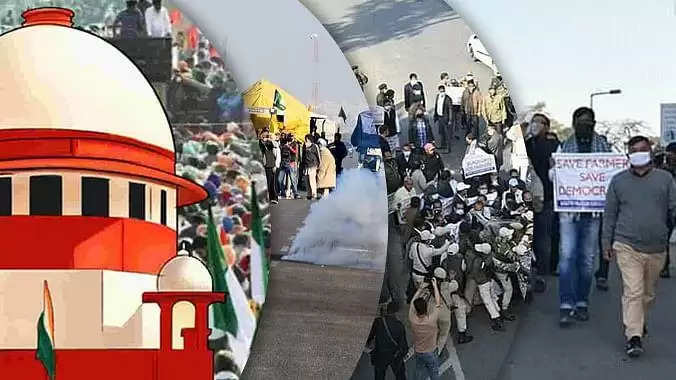EDITORIAL | Farm Laws: Who will draw the line in the sand?

FROM THE EDITOR’S DESK:
Agriculture in India is the livelihood of almost 70 per cent of the country’s workforce.
Agriculture is also heavily dependent on the monsoon season, and the intensity of cropping is highly concentrated in Punjab, followed by West Bengal and Uttar Pradesh.
The Minimum Support Price (MSP) increased by large magnitudes till 2000-2001.
However, the three farm laws, namely ‘The Farmers’ Produce Trade and Commerce (Promotion and Facilitation) Act, 2020’ allows electronic trading and e-commerce of scheduled farmers’ produce.
‘The Farmers’ (Empowerment and Protection) Agreement on Price Assurance and Farm Services Act, 2020’ provides a legal framework for farmers to enter pre-arranged contracts with buyers and the ‘Essential Commodities (Amendment) Act, 2020’ removes foodstuff such as cereals, pulses, potato, onions, edible oilseeds, and oils, from the list of essential commodities, removing stockholding limits on such items except under “extraordinary circumstances”
ALSO READ:
Also Read: Five “Tambola” participants arrested in Sikkim
The Chief Economist of the International Monetary Fund, Gita Gopinath, had stated that the farm bills and labour bills are very important steps in the right direction.
However, ‘The Farmers’ Produce Trade and Commerce (Promotion and Facilitation) Act, 2020’ which facilitates electronic trading and e-commerce of scheduled farmers’ produce is what the farmers worried about as big corporations would raise their heads to control pricing in the market as per their wishes.
Naresh Chandra Saxena in his book “What Ails the IAS and why it fails to deliver” mentions the weak link of the Public Distribution System from ghost cards to the leakage in the delivery mechanism.
Another issue in India is the risk of the rise of suicide rates of farmers.
Coming back to the events that took place on Republic Day, January 26, in New Delhi, what was supposed to be a peaceful tractor parade erupted into pandemonium which led to clashes between the Delhi Police and protesting farmers.
ALSO READ:
Also Read: Meet the Padma awardees from Northeast India
Sadly, this has resulted in a wave of fake news circulating the internet and various social media platforms.
But we cannot solely blame the protesting farmers or Delhi Police, as both were equally responsible.
From news of protestor killed in police firing to the hoisting of Khalistan flag atop the Red Ford, social media was flooded with unconfirmed and misleading reports, only aggravating the already volatile situation.
Could this peaceful-turned violent protest be funded or sponsored by some individual(s) or groups? Are the farmers being misled? Who is holding the remote control? Who is inciting the violence?
All these questions come flooding in as we try to dissect the problem piece by piece, only to find the protest as part of a bigger and agenda-driven problem.
Be that as it is, both sides are to be blamed for what happened yesterday; thanks to disorganised leadership, misinformation, and some unwanted elements.
ALSO WATCH:

















